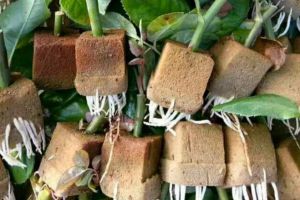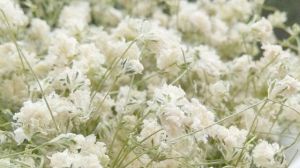Throw Phalaenopsis after blooming? What a fool! As I raise it, I can open it every winter!

Select hole flowerpot
With regard to the choice of butterfly orchid pots, the first kind of introduction is plastic pots, which are recommended to you here. The basin inside is a transparent plastic basin with holes around and the bottom of the basin.
The cover basin on the outside is a plastic basin with no hole at the bottom, but you should pay attention to punching holes in the side wall of the flowerpot, and the height of the hole is level with the bottom of the inner basin.
The second is the red pottery basin that we novice are most familiar with, which is very suitable for matching with water moss.
When we choose to use red pottery pots, we should also choose flowerpots with many holes in the bottom and walls, and the newly bought flowerpots should be steamed and soaked in water for one night before use.
How to plant Phalaenopsis?
We can choose bark, water moss, snake wood, coconut bran, ceramsite, fine brick stone and so on. For flower friends in the north, the air is relatively dry, so it is recommended to use water moss to maintain Phalaenopsis.
Before using water moss, soak it in hot water, then wring it out and set aside. Before putting on the basin, fill the root pocket of Phalaenopsis with water moss, put a drain cover in the middle, and then wrap the water moss outside the root.
Gently press the Phalaenopsis into the flowerpot, and then use a small wire to fill the water moss inside, do not plug too tight, 80% tightness on the line, plug, the top covered with a layer of water moss.
Daily maintenance
In the conservation of Phalaenopsis, scattered light is better, we can feel the intensity of the sun with our hands, bask in the soft but not irritating on the back of our hands, touch the leaves, and do not get hot.
Now that we have entered the autumn, we have to slowly increase the light, wait until winter, gradually adapt to full daylight. However, due to the different environment in different places, the lighting should be dealt with as appropriate.
2. Temperature and humidity
The temperature of Phalaenopsis should be controlled between 20 and 30 ℃ during the growing period, and it will stop growing when it is higher than 35 ℃ or lower than 18 ℃.
It is best to keep the humidity at 75%-80%. If it is during the slow seedling period, higher air humidity may be required. We can humidify it by spraying water and using a humidifier.
3. Moisture
When watering, usually weigh its weight and feel lighter; touch the water moss at the vents at the bottom of the basin with your hand, or insert your hand directly into the water moss to feel dry before watering.
If it is maintained with bark, the water retention is poor, so water moss should be watered more frequently than water moss.
4. Ventilation
No matter what kind of plant it is, if you want to maintain it well at home, you should pay attention to a lot of ventilation. Poorly ventilated potted plants not only grow poorly, but also lead to plant decay and various diseases and insect pests.
5. Fertilization
We can start from 2 weeks after flower failure, apply comprehensive nitrogen, phosphorus and potassium fertilizer; when promoting flowering, we can apply phosphorus and potassium fertilizer and increase light until the flower bracts grow to the size of peanut kernels.
What should I do after the flower fails?
For the Phalaenopsis we bought, after appreciating its beauty and flower failure, we should cut off the flowers in time to reduce plant consumption and store nutrients for the next flowering.
- Prev

Now do not use soil for cutting, a sponge whipped out white roots, 100% basin!
As soon as the weather is cold, it is a good time for cutting. Flower friends must not miss it. This is not, today Huahua hurriedly share a set of new cutting methods, just a few sponges on the line, white root buds dense, this good idea, you must put it away!
- Next

After the "full Sky Star" is made into dried flowers, it is simply beautiful! Simple and practical, try it quickly.
Huahua passed by the florist a few days ago and fell in love with the milky white stars placed by the window. Took it home, Huahua thought, such a beautiful star slowly withered what a pity. So Huahua wants to make the stars into dried flowers, so it can't be preserved for a long time.
Related
- What if the leaves of potted flowers turn yellow?
- Florescence Control of several Flowers
- Anti-freezing technology and post-freezing nursing technology of flowers
- What is the classification of flowers? What are the common methods of flower classification?
- Prevention and control of alkali and acid damage of flowers in courtyard
- Technology of Anti-freezing and restoring growth of Flower seedlings in greenhouse and greenhouse
- How does flower fertilization not hurt the root? Fertilization technology of flowers
- Key points of disinfection in flower greenhouse
- Several pesticides that are banned or used cautiously in flowers
- How to fertilize the flowers that watch the leaves?

